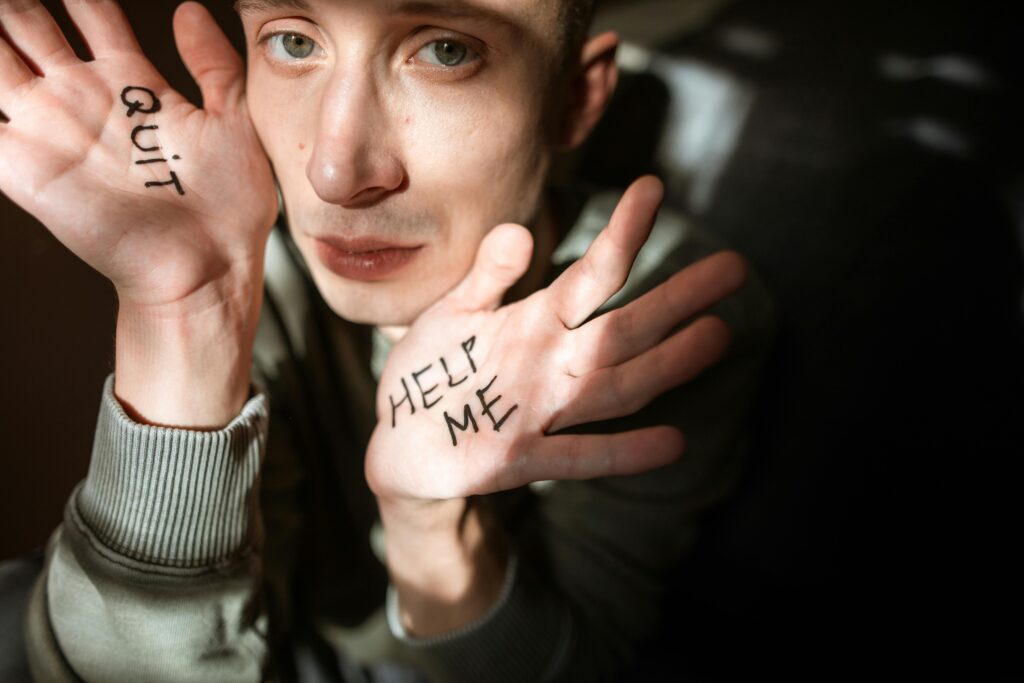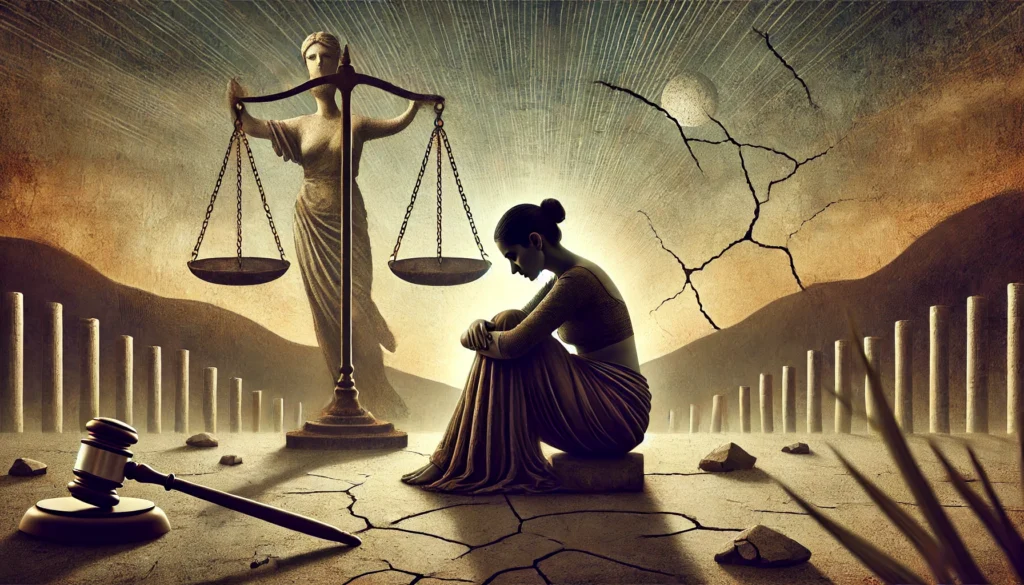Published on 23rd June 2025
Authored By: Soumali Chatterjee
Calcutta University
Abstract
Every woman has a dream to spend their married life happily. But many times it has been seen that women are abused by their in-laws’ family members just because of the problem of Dowry. Every woman deserves to be in a dignified status in our society.
The term “dowry death” describes an unusual or strange death that occurs within a few years of a woman’s marriage, especially when it is connected to a dowry demand or abuse or harassment by her husband or his family. Dowry deaths are a tragic and disturbing phenomenon in India. Despite legislative efforts, dowry deaths continue to claim numerous lives every year, highlighting the need for a more effective implementation of laws and social change. It is a type of gender-based violence and a major effect of dowry-related problems. Dissatisfaction with the dowry given often leads to domestic abuse, which in turn causes dowry fatalities. The government has enacted many laws regarding women’s safety, such as the Dowry Prohibition Act, 196.
Key Words: Dowry death, domestic abuse, gender-based violence, unusual death.
Introduction
Marriage is a social institution that legally recognizes a union between two people, typically involving a commitment to share a life as spouses. It encompasses emotional, social, legal, and often spiritual dimensions, and its definition and practices can vary widely across cultures and legal systems. In many societies, marriage is seen as a foundation for family and is associated with rights and responsibilities for the couple and their children. But in some cases, marriage has not been this type for every woman’s life caused to dowry.
The term ‘Dowry’ has not been defined in the Indian Penal Code. In 1986, a new offence known as “Dowry Death” was inserted in the Indian Penal Code, as section 304B by the Dowry Prohibition (Amendment) Act, 1986, with effect from 19th November 19861. The practice of dowry, despite being illegal, remains deeply entrenched in Indian society, perpetuating gender- based violence and discrimination. This issue highlights the need for stringent enforcement of laws, societal change, and support systems for victims to combat this menace effectively. Dowry deaths are often linked to dissatisfaction with the dowry, which can lead to cruelty, harassment, and ultimately, the death of the woman, which occurs within seven years of a woman’s marriage when her death is caused by burns, bodily injury, or other unusual circumstances.
Background
The background of dowry deaths in India is rooted in a complex interplay of historical, cultural, and socio-economic factors. Dowry, which was initially a voluntary practice of providing gifts to the bride or groom’s family, has evolved into a coercive demand for money, goods, or property. This practice has been perpetuated by societal norms, economic pressures, and patriarchal attitudes that view women as a financial burden.
Here, several factors contribute to the persistence of dowry deaths are as follows-
- Patriarchal Society: India’s patriarchal structure often views women as subordinate to men, leading to their exploitation and mistreatment. The dowry system is a manifestation of this imbalance, where women are seen as commodities that come with a price.
- Economic Factors: Economic disparities and the financial expectations of the groom’s family often lead to dowry demands. In many cases, families feel pressured to meet these demands to secure their daughter’s future.
- Cultural Norms: The practice of dowry is deeply ingrained in certain communities, and families often comply with these demands due to societal pressure and the fear of social ostracism.
- Lack of Awareness and Education: Limited awareness of legal rights and the consequences of dowry-related violence contributes to its persistence. Education and awareness can empower individuals to challenge these harmful practices.
- Inadequate Legal Enforcement: While laws like the Dowry Prohibition Act, 1961, and Section 304B of the IPC are in place to combat dowry deaths, their enforcement remains inconsistent. Corruption, lack of resources, and societal biases often hinder effective legal action.
- Social Stigma: Victims and their families frequently face social stigma, which discourages them from reporting dowry-related violence or pursuing legal This stigma perpetuates a culture of silence and impunity2.
Main Body
Analyse the nature of Dowry Death:
The nature of the dowry offences that are generally committed in the privacy of residential homes and in secrecy, independent and direct evidence necessary for conviction is not easy to obtain.
The nature of dowry death is a complex and multifaceted issue, characterized by domestic violence, cruelty, and harassment inflicted upon women by their husbands and in-laws for dowry demands. It often involves unnatural deaths, such as burns, poisoning, or physical assault, which can be disguised as accidents or suicides. Dowry deaths are a manifestation of patriarchal attitudes and biases that view women as inferior and subordinate to men, perpetuated by social and cultural norms that condone or tolerate dowry demands and violence against women. The consequences are devastating, resulting in loss of life, trauma, and psychological impact on the victim’s family and loved ones, as well as social stigma that can further exacerbate their suffering.
Characteristics:
Domestic Violence: Dowry deaths often occur within the domestic sphere, where women are subjected to physical, emotional, and psychological abuse by their husbands and in-laws.
Demand for Dowry: The primary motivation behind dowry deaths is the demand for dowry, which can take various forms, including cash, jewelry, and other valuable items.
Cruelty and Harassment: Women are often subjected to cruelty and harassment by their husbands and in-laws for dowry demands, which can lead to physical and mental trauma.
Unnatural Deaths: Dowry deaths often involve unnatural circumstances, such as burns, poisoning, or physical assault, which can be disguised as accidents or suicides.
Relevant Cases
Kamesh Panjiyar vs State of Bihar AIR 2005 SC 785
In this case, the Supreme Court outlined the essential elements of dowry death under Section 304B of the Indian Penal Code, which includes:
- Death caused by burns or bodily injury within seven years of marriage
- Cruelty or harassment by the husband or his relatives
- Demand for The court convicted the husband under Section 304B of the IPC and sentenced him to ten years of imprisonment, which was later reduced to seven years by the High Court and upheld by the Supreme Court.
Bachni Devi vs State of Haryana AIR 2011 SC 1098
In this case, the Supreme Court stated that any demand for property or valuable security connected to marriage constitutes a dowry demand. The court convicted the husband and mother-in-law under Section 304B of the IPC and sentenced them to seven years of rigorous imprisonment.
Rajinder Singh vs State of Punjab AIR 2015 SC 1359
The court explained the term “soon before death” in dowry death cases, stating that the demand for dowry should be the continuing cause for the death of the married woman. The court convicted the husband under Section 304B of the IPC and sentenced him to seven years of rigorous imprisonment.
Satbir Singh vs State of Haryana AIR 2021 SC 2627
The Supreme Court held that the phrase “soon before” cannot be construed to mean “immediately before.” A close and live link between the dowry death and cruelty or harassment by the husband and his relatives must exist. The court must be extra cautious while dealing with cases of dowry death.
Legal Framework
Dowry Prohibition Act, 1961: The Dowry Prohibition Act, 1961, prohibits the giving or taking of dowry.
Section 304B of the IPC: Section 304B of the Indian Penal Code deals with dowry deaths and prescribes punishment for those found guilty.
Section 498A of IPC: Section 498A of the Indian Penal Code deals with cruelty towards women by their husbands or in-laws.
Analysis of Opposing Views on Dowry Deaths
Dowry deaths are a contentious issue, and there are various opposing views on the causes, consequences, and solutions to this problem. Here, we’ll analyse some of these views and refute them where necessary.
Dowry Deaths are a Result of Women’s Inferior Status
Some argue that dowry deaths are a result of women’s inferior status in society, and that women are viewed as a burden on their families. This view is partially correct, as women’s inferior status does contribute to dowry deaths. However, it’s essential to recognize that dowry deaths are a symptom of a broader societal issue, including patriarchal attitudes, economic pressures, and lack of education.
Dowry Deaths are a Rare Occurrence
Others argue that dowry deaths are a rare occurrence and that the media and activists exaggerate the issue. However, statistics show that dowry deaths are a significant problem in India, with thousands of women dying every year due to dowry-related harassment and violence. According to the National Crime Records Bureau (NCRB), there were over 7,000 dowry deaths in India in 2020 alone. This view is refuted by the data, which highlights the severity of the issue.
Dowry Deaths are a Result of Women’s Families Giving in to Demands
Some argue that dowry deaths occur because women’s families give in to dowry demands, which creates a culture of entitlement among grooms and their families. While it’s true that giving in to dowry demands can perpetuate the problem, it’s essential to recognize that women’s families often face immense pressure and coercion to meet these demands. Moreover, the root cause of dowry deaths lies in the societal attitudes and economic pressures that drive dowry demands, rather than the actions of women’s families.
Dowry Deaths are a Cultural Issue
Others argue that dowry deaths are a cultural issue, and that outsiders should not interfere with Indian culture. However, dowry deaths are a human rights issue that transcends cultural boundaries. The right to life and dignity is a fundamental human right, and dowry deaths violate this right. It’s essential to recognize that culture is not static and that social norms and practices can be challenged and changed to promote human rights and dignity.
Discussion
Implications of dowry death:
Social Implications
Dowry deaths result in the loss of life of thousands of women every year, leaving families and communities devastated. Dowry deaths have a profound psychological impact on the victim’s family and loved ones, causing trauma, grief, and emotional distress. It carries social stigma, which can affect the victim’s family and loved ones, making it difficult for them to seek justice or support.
Economic Implications
Dowry deaths can result in significant financial burdens on families, particularly those who have invested heavily in their daughter’s education and marriage. The loss of a woman’s life can also result in a loss of income for her family, exacerbating economic hardship.
Legal Implications
Dowry deaths put a significant burden on the criminal justice system, requiring effective investigation, prosecution, and punishment of perpetrators. The prevalence of dowry deaths highlights the need for stricter laws and more effective enforcement to prevent such crimes.3
Implications for Women’s Rights
Dowry deaths are a violation of women’s human rights, including the right to life, dignity, and freedom from violence. The prevalence of dowry deaths highlights the need for women’s empowerment through education, economic opportunities, and social support.4
Solutions or recommendations
Education and Awareness
Implement education and awareness programs to challenge societal attitudes and promote a culture of respect and equality for women. Engage with local communities to raise awareness about the issue of dowry deaths and promote collective action to prevent such crimes.
Women’s Empowerment
Provide economic opportunities and support to women to reduce their vulnerability to dowry- related harassment and violence. Promote education and skill development for women to enhance their economic independence and social status.
Conclusion
Dowry deaths are a serious issue in India, resulting in the loss of thousands of lives every year. To address this problem, it is essential to challenge societal attitudes and norms that perpetuate such crimes through education and awareness programs, community engagement, and women’s empowerment. Stricter laws and more effective enforcement are also crucial in preventing dowry deaths and holding perpetrators accountable. Collective action from government, civil society, and individuals is required to prevent dowry deaths and promote women’s empowerment, ultimately creating a safer and more equitable society for women and girls.
References
- Family Law
- Indian Penal Code, 1860 – K D Gaur. Bhartiya Nyaya Sanhita, 2023 – K D Gaur. Dowry Prohibition Act, 1961
- Dowry Death in India: Legal Perspectives, Social Challenges, and Solutions – Legal Service India.
- Women’s Rights – Wikipedia.
- K D Gaur, ‘Textbook on Indian Penal Code’ (7th Ed. 2023) P. 854
-
‘7 ways Sexual Violence Laws are failing survivors around the World’ (Equality Now, 24th November 2024) < https://equalitynow.org > accessed 10th May 2025
-
Kunal Pandya, ‘Dowry Deaths in India: Legal Perspectives, Social Challenges, and Solution’ (Legal Service India) < https://legalserviceindia.com > accessed 11th May 2025
-
Women’s rights, (Wikipedia) < https://en.wikipedia.org > accessed 11th May 2025




